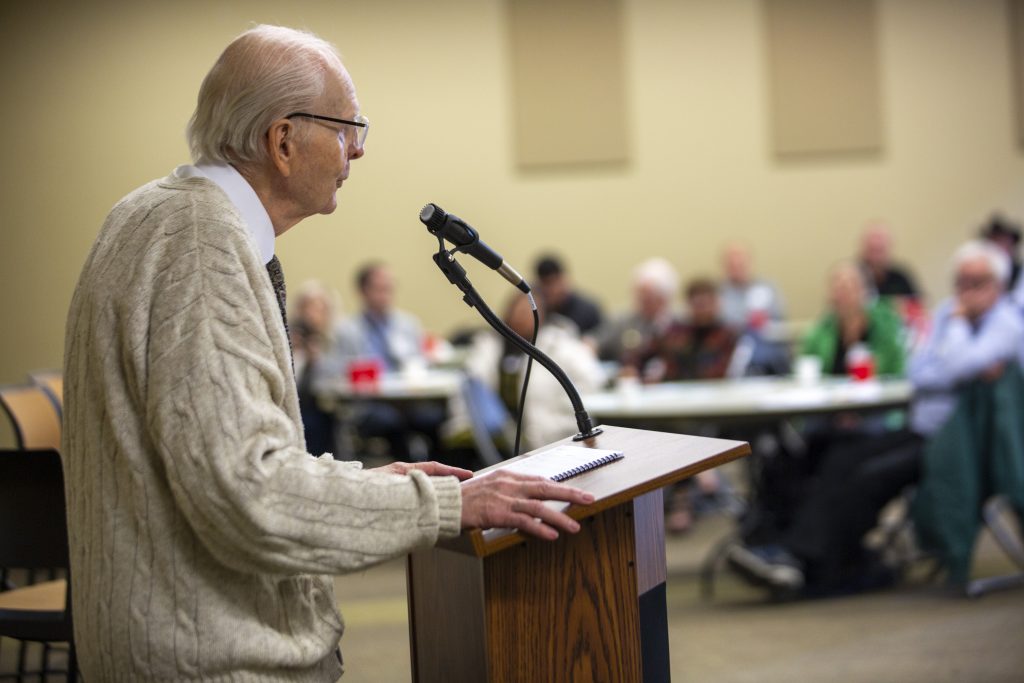
In the early 1980s, a small group of mathematicians and agricultural economists saw a need that few others acknowledged — objective analysis of agricultural markets and policies. With perseverance to find funding and an academic home — both of which were challenging — that small group of people brought the Food and Agricultural Policy Research Institute (FAPRI) at the University of Missouri to life in 1984.
Today, FAPRI is a valuable resource for a wide range of stakeholders including the U.S. Congress, USDA, commodity groups and international governments. Its purpose is to provide decision makers with information about how changes in policies or market conditions affect the agricultural sector using economic models of key commodity markets to estimate how different policy options affect prices and quantities, producers, consumers, and government costs.
“It’s wonderful to see what has come of this,” said Abner Womack, professor emeritus of agricultural economics and co-founder of FAPRI during the 10th Annual Abner Womack Missouri Agriculture Outlook Conference, which also celebrated FAPRI’s 40th anniversary. “I need more of that.”
Womack joined the faculty at MU in 1979, and he created FAPRI alongside fellow co-founder Stan Johnson, who was a fellow MU faculty member. The pair saw a need for unbiased agricultural forecasting and farm program analysis and began the work of finding a home for an institute that would fill that need.
“The real stake in the ground was the fact that Stan Johnson was here,” Womack said. “He just has a brilliant mind. He’s a talented mathematician, and he helped us set up FAPRI here because we had nowhere else to go.”
While Womack credits Johnson, many others credit Womack for FAPRI’s establishment, including Willi Meyers, professor emeritus of agricultural and applied economics at MU. Meyers joined the FAPRI faculty at Mizzou in 2002, but he worked alongside Womack and Johnson from the beginning as he created FAPRI’s international models out of Iowa State University.
“It’s amazing how it evolved,” Meyers said. “Maybe we wouldn’t have anticipated how it has evolved, but I call it serendipity. I give credit to Abner. He was really the spark that kept it all together anytime there was a battle to be fought for funding or anything, he was there.”
Meyers had a front-row seat to FAPRI’s evolution from an idea to an international resource. He spent much of his time working with the European Union developing models for its member countries, and those models are still used today.
Meyers emphasized that having FAPRI based at a university is essential to its success. Not only does that allow for unbiased models, but Meyers contends that it helps to integrate the next generation.
“The real importance of doing this at a university is the grad students and the ones who stay for post-docs,” Meyers said. “It keeps the creative juices going, and it’s hard to find someone who is both good at this and are interested in this work. Bringing grad students into the equation helps to find those people.”
Many of FAPRI’s current faculty were once graduate students working with the program either at MU or with Meyers when he was at Iowa State University, and several of them are now driving agricultural markets and polices in other ways, such as through work at the USDA or commodity groups.
“We take great pride in our economic models, but even more pride in our modelers,” said FAPRI Director Patrick Westhoff, Howard Cowden Professorship professor of agricultural economics. “It’s great to see our alumni in influential positions around the world.”
Gary Adams, president and CEO of the National Cotton Council of America, is one such former graduate student.
Adams always had a mind for math, and he happened to grow up on a farm that neighbored Womack’s, so, after completing his undergraduate degree, Womack convinced him to work at FAPRI and pursue graduate training at MU.
“Abner was definitely a mentor to me throughout grad school,” Adams said. “FAPRI opened opportunities to me to apply my math degree in more real-world applications, and that was really appealing to me.”
Adams was shaped by his time at FAPRI, and he also noted that it is unique in the way it blends mathematicians and economists and making theory applicable in ways that have real effects on people around the world.
Today, Adams still relies on FAPRI for parts of his job in the cotton industry.
“To have these long-term projections for the individual commodities and be able to apply that to the internal work that we do is incredibly valuable,” he said.
Womack says he is looking forward to seeing where the next generation takes the institute.
“I would like to be around for the next 30 years,” Womack said. “You are headed into an era of information like we’ve never seen before. That’s a good thing.”
Westhoff is leading the institute into that era. He says working for FAPRI and being a part of so many important decisions made by people including global policymakers and individual farmers is highly rewarding.
“There are always new issues to examine,” Westhoff said. “In just the last few years, we’ve analyzed the impacts of trade disputes, the pandemic, and the war in Ukraine, and we’ve looked at dozens of farm bill options. I expect FAPRI will always have plenty of new puzzles to address.”